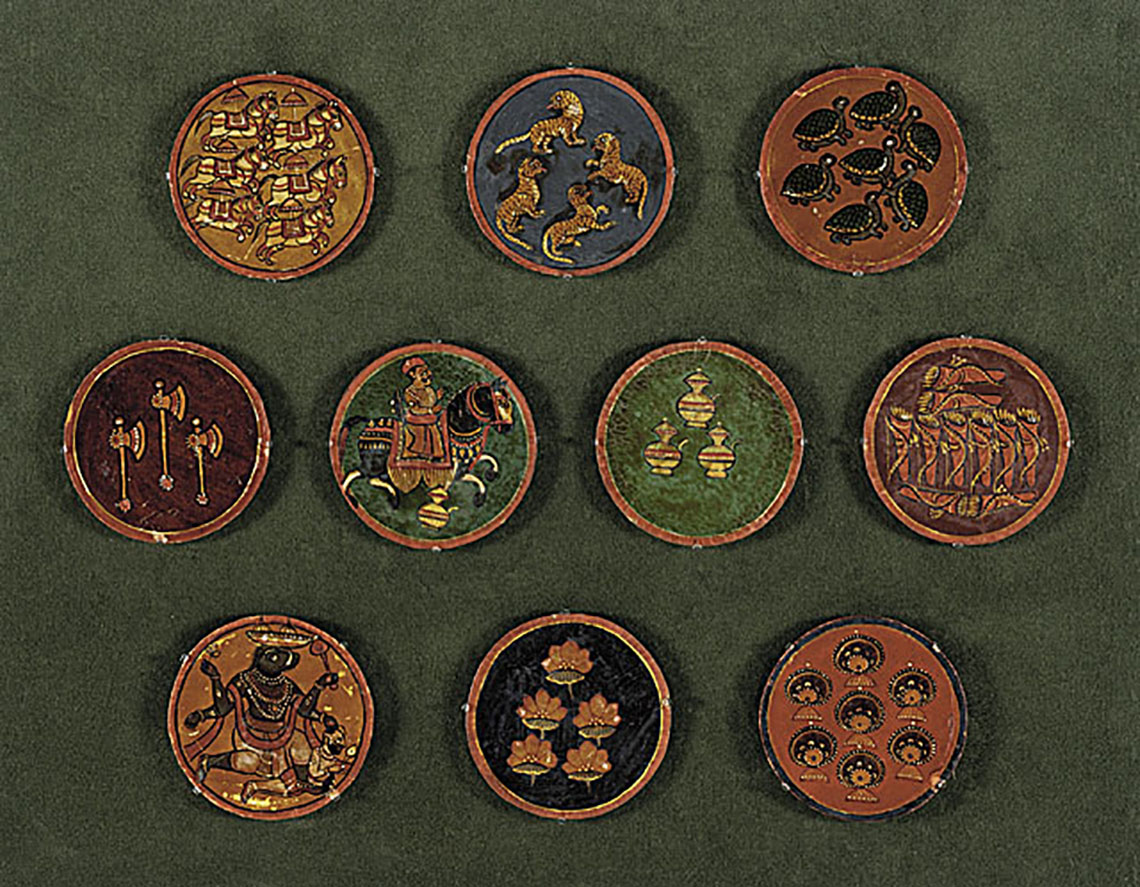Ganjifa – Medieval India’s Favourite Card Game
In a day and age where everything is automatic and machine manufactured, reading stories about the rich creative and artistic bend of our ancestors even in most unassuming of things can put a smile on anyone’s face. Take for instance Ganjifa, an ancient Indian card game, which may be a lost art, but is much unlike anything we’ve ever encountered.

Volare digital capture
Ganjifa originated in Persia and found its way to India during the Mughal rule. The name is derived from the Persian word ganjifeh, which means ‘playing card’ and the first known mention of this game was in Babur’s biography, who was one of the rulers of the Mughal Empire.
While the cards available now are rectangular shaped, Ganjifa is originally a round card pack (sometimes even oval) with hand-painted art work on it. In the 16th century, these cards were made from tortoise shell or ivory and were encrusted with precious stones. But as the card game gained popularity, the game evolved to change with the times and soon Ganjifa card packs were made from wood or leaves. This made the game affordable, brought communities together and people from all walks of life socialised over a game of cards.
The artwork on Ganjifa cards were primarily ancient scriptures and religious hymns & verses. You would notice, as the region changed so did the paintings on the cards and the format of the game. There were many variants of Ganjifa, including from regions of present-day Nepal, Gujarat, Orissa, Rajasthan, Kashmir, Mysore and Maharashtra. The themes of the packs ranged from Ramayana, Mahabharata, Navagraha (nine planets), Ashtadikpala (eight cardinal directions), and Dashavatara (ten incarnations of Lord Vishnu).
Call it a peril of a constant phenomenon called ‘change’, but with changing times, Ganjifa got lost somewhere between pack of convenient cards. Every storm cloud though, has a silver lining and the silver lining here is that many artists still are taking pains to preserve this lost art! It is because of the effort of these artists that Ganjifa has been featured in London’s Victoria and Albert Museum. We say, more power to such artists!

